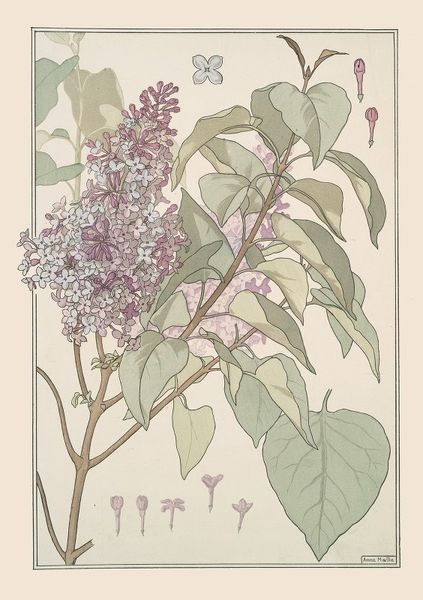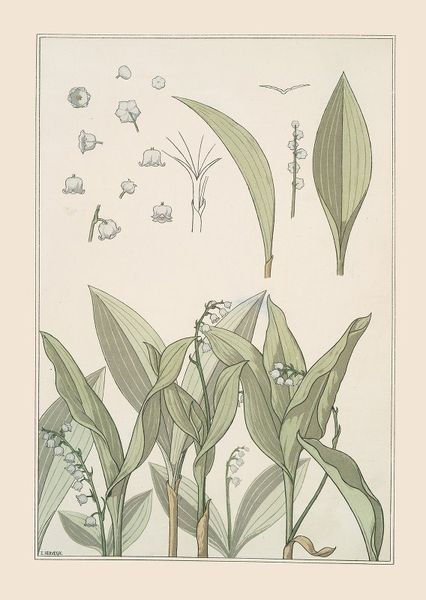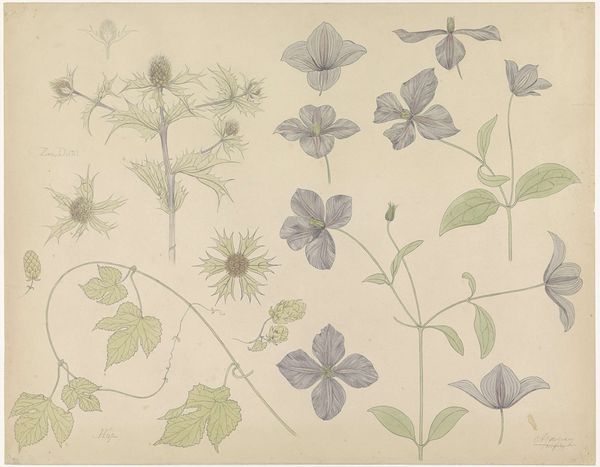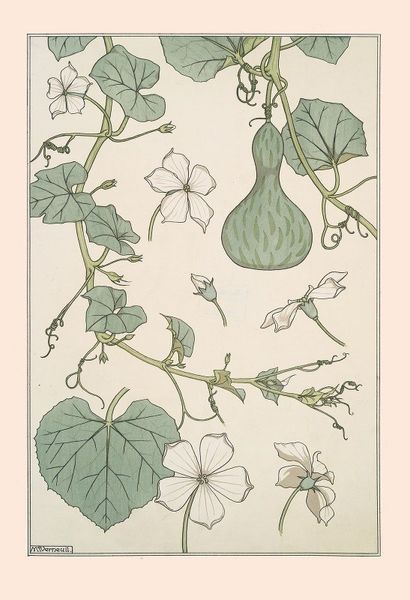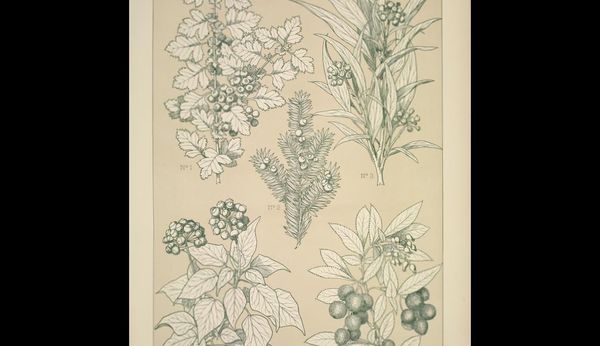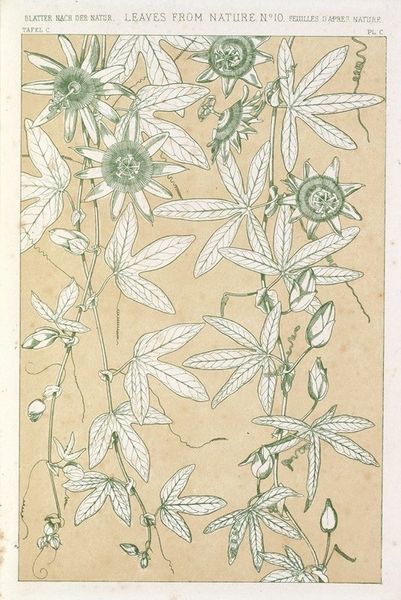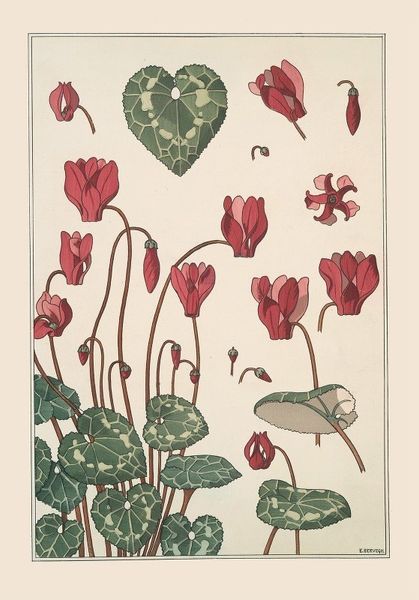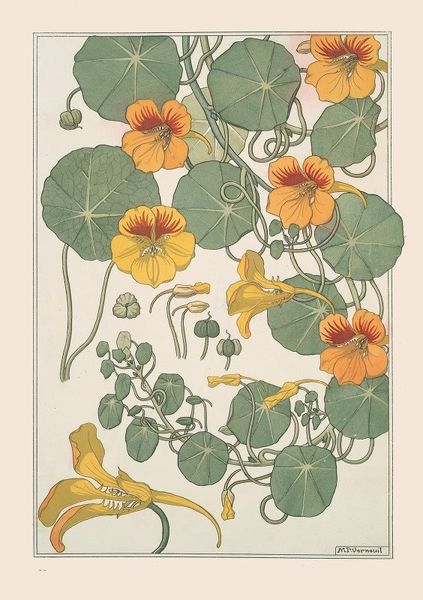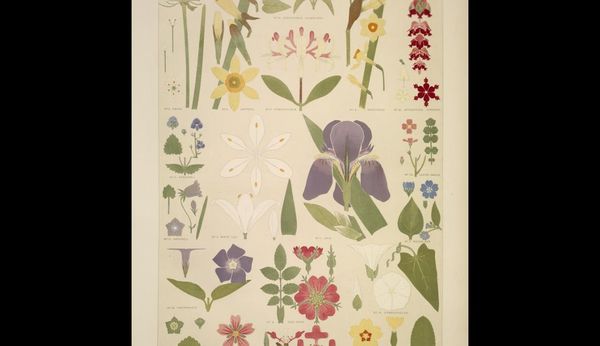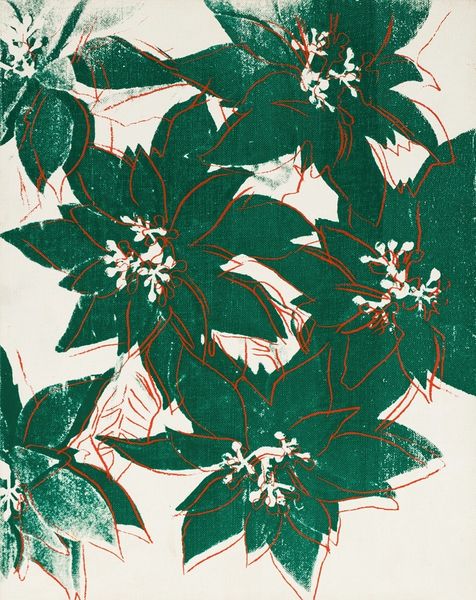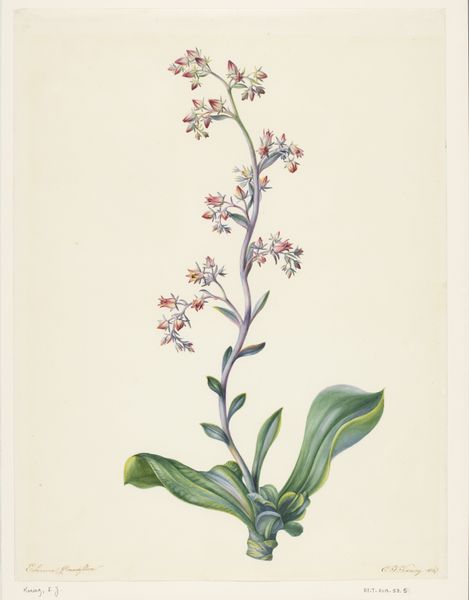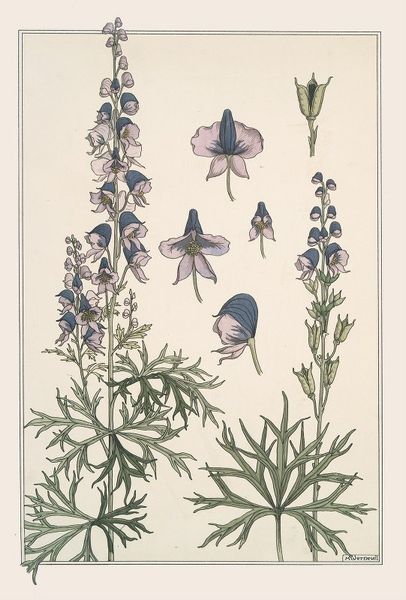
drawing, print, linocut
#
drawing
#
art-nouveau
# print
#
linocut
#
linocut print
Copyright: Public Domain: Artvee
Curator: It’s interesting how the composition balances scientific study with ornamental aesthetics. This is "Pervenche" a linocut print created in 1896 by Maurice Pillard Verneuil. Editor: I’m immediately struck by the botanical coolness of this work, its almost clinical precision rendered in muted greys and greens, and its peaceful, ethereal feel. The plant studies against that background offer a soothing sort of elegance. Curator: The late 19th century witnessed an explosion of interest in natural forms and design, fueled by increased urbanization and a desire to reconnect with nature through art. Verneuil and many Art Nouveau artists frequently looked to botany for inspiration and integrated these motifs into various decorative forms. The context surrounding "Pervenche" reveals it's part of a movement advocating accessible beauty and nature amidst industrial growth. Editor: Pervenche, the French word for Periwinkle, a flowering plant of resilience and growth. Note how each blossom and leaf, seemingly floating, carries a different weight, contributing to the overall delicate balance of this imagery. As the perennial flower blooming from spring through autumn, does the "Pervenche" symbolize everlasting life or immortality? Curator: It does underscore the era's optimism. Linocuts like this were inexpensive and easy to produce, making art and design accessible to a wider audience than traditional painting, a shift driven by the social values of the time that aimed to democratize the arts and allow art to blend into every aspect of the environment, shaping attitudes. Editor: But what really captures my attention is that repetition, which invokes almost rhythmic quality to it. The symbolism here reflects a yearning for the restorative peace of nature as an antidote to an industrialized existence. Each carefully chosen flower invites us to find our own place within that symbolic renewal. Curator: It is important to consider art's role beyond mere decoration during this period. Pieces like "Pervenche" embody a vision of a reformed society through art and nature, suggesting ways art influences both aesthetic tastes and socio-cultural movements. Editor: Indeed. Exploring Verneuil’s "Pervenche," my perspective shifted from initial aesthetic appreciation to an appreciation for the subtle emotional power interwoven in this botanical imagery. Curator: Likewise, revisiting "Pervenche" highlights how design intersects with cultural and societal values of the period, offering rich insights into how we can shape public perception through accessible forms.
Comments
No comments
Be the first to comment and join the conversation on the ultimate creative platform.
